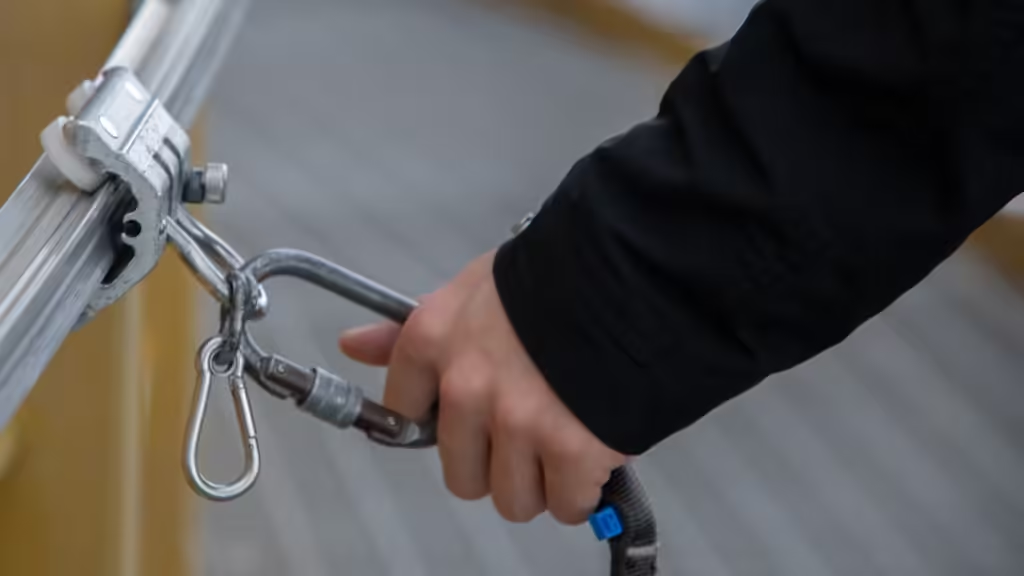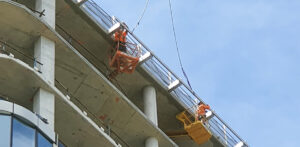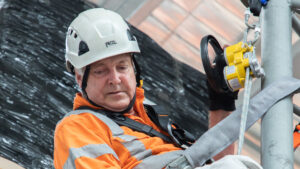Fall restraint systems, like most things height safety, come in different forms and service different purposes. But what are they, and how do they work?
Fall restraint is an effective method of mitigating the risks of a fall while working at height.
Although it can utilise many of the same components as a fall arrest system, fall restraint systems are different and have their own advantages when it comes to protecting people.
What makes fall restraint marginally more complex is that there are really two different types – total restraint and the use of fall restraint technique.
Fall restraint and fall arrest
Put briefly, working in fall restraint will prevent someone from placing themselves in a situation where a fall can occur.
In contrast, working in fall arrest means that a fall can still occur. The system will stop the worker impacting the ground as a result, protecting them from severe injury or death.
Fall restraint is considered safer than fall arrest and would be the preferred method to use. However, the realities of working at height are that this is not always possible. Which is why fall arrest is also present as part of a height safety solution.
Total restraint
A total restraint system is one that will not allow a user to place themselves into a situation where a fall off an edge is possible.
They achieve this by using components like fixed-length lanyards. These lanyards can be attached to either anchor points, rigid rail systems or an anchor strap. This creates a pre-determined area that can be accessed by the worker. But they cannot move beyond it.
For example, the safety system used on the Sydney Tower Eye attraction – that allows for unobstructed 360-degree views around the Sydney CBD – uses a total restraint system for visitor safety.
When moving out to the rooftop walkways, visitors are connected to a rigid rail system that ensures they cannot access any area of the attraction that is unsafe.

Total restraint is a preferred method of working at heights if elimination and substitution of the fall risk is not possible.
Fall restraint technique
Fall restraint technique involves a pairing of both fall arrest anchor system design and how a worker connects to and uses that system.
The first part of using this technique is ensuring that roof anchors are placed such that a worker can transfer from one connection point to another without ever placing themselves in a position where a fall is possible. Typically, fall arrest anchors are used, however rope access and abseil anchors can also be used with fall restraint technique if the system design allows.
Depending on the work area being accessed, safe access may be possible to the entire area or only a section of it. This limitation would be made known during a site induction and contained with safe operating procedure for the system.
Secondly, and perhaps most importantly, those using the system need to make sure they are following the correct procedures and using their PPE and other equipment correctly. They should also be aware of the sequence in which anchor points should be connected to and maintain strong awareness of their positioning while completing work.
The hierarchy of control and fall restraint
Fall restraint systems sit at the engineering level on the hierarchy of risk controls. Generally, you are using a fall restraint system if the need to work at height cannot be removed (elimination), or a safer form of access provided (substitution).
However, although they are all the same type of control, there is a preferred order of operation within engineering controls themselves.
A total restraint system should be considered first. The advantage of total restraint is that while the user is connected to the system, there is almost zero chance they can place themselves in a potential fall situation. They are totally restrained.
Fall restraint technique is different in that it hinges on the competency and correct application by the user of the system to maintain that distance from a potential accident.
Incorrect application of this technique, even if all other aspects of the system are compliant, can place the user in a situation where they are at risk of a fall occurring.
Partners in protecting people
No matter the working at height situation or environment, Height Safety Engineers has the experience to design, install and maintain a compliant, easy to use safe access or fall protection system.
Start your safety journey with our team of height safety experts by calling 1300 884 978, using the contact form at the top of this page or emailing enquiries@heightsafety.net.





